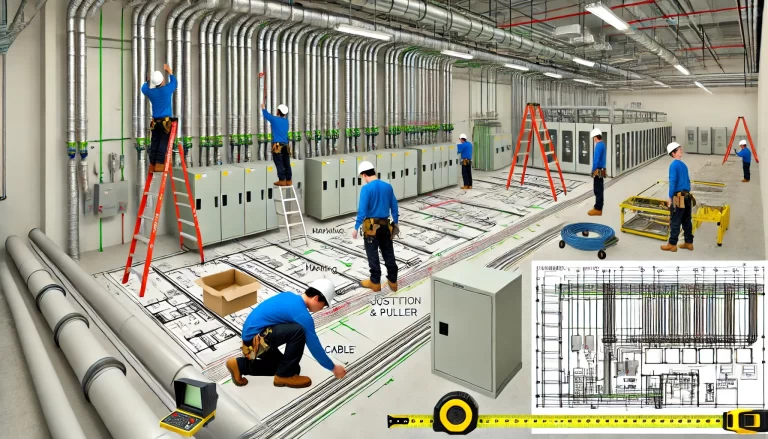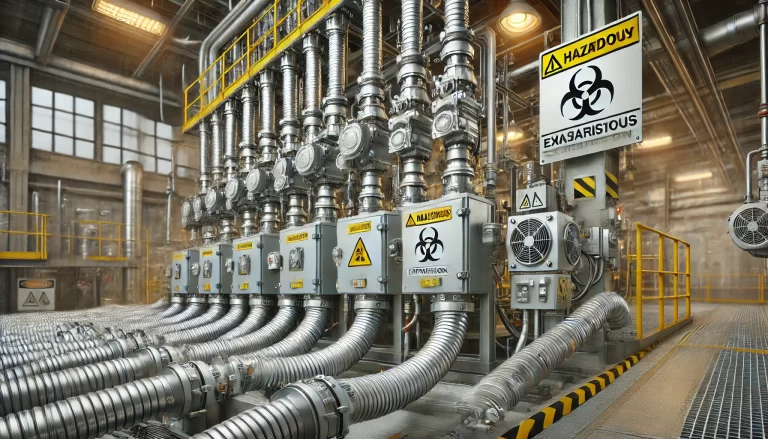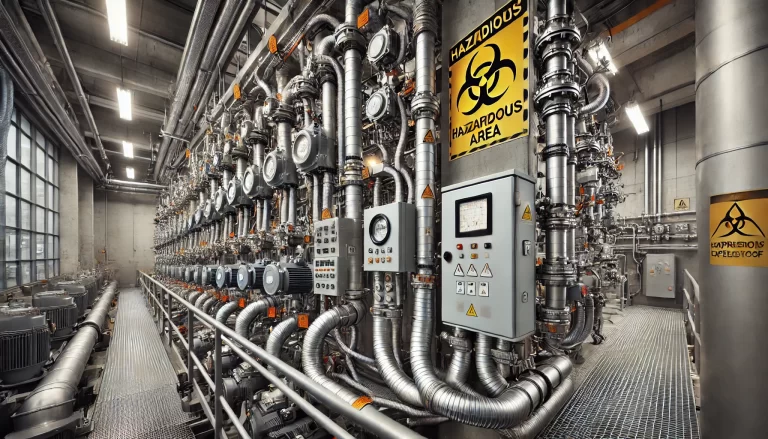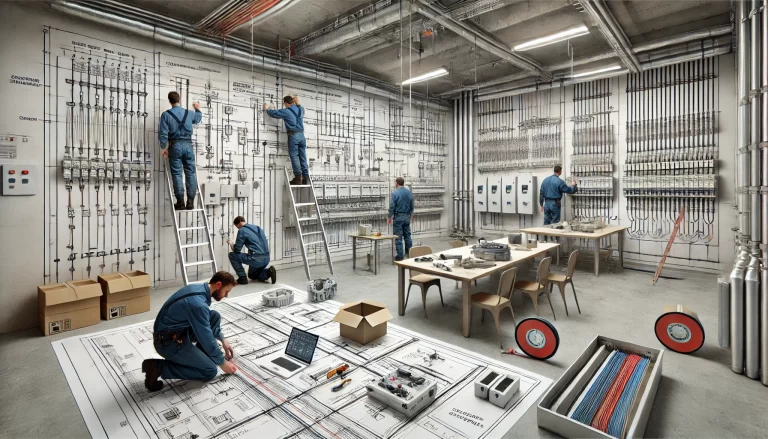In industrial settings where hazardous gases, vapors, or dust may be present—commonly referred to as hazardous areas or explosion-proof zones—electrical and instrumentation installations must strictly comply with safety regulations to prevent ignition sources. A common question arises during design and installation:
Is the use of flexible conduit mandatory in explosion-proof areas?
The answer is: It depends on the specific installation conditions, applicable regulations, and the type of equipment used. However, in most cases, explosion-proof flexible conduit is strongly recommended or required to ensure safety and compliance.

1. What Is Explosion-Proof Flexible Conduit?
Flexible conduit is a type of protective tubing used to route and protect electrical wires and cables. In explosion-proof areas, the conduit must be certified for use in hazardous locations, typically with an Ex d or Ex e rating in accordance with standards such as IEC 60079 or ATEX/NEC.
Explosion-proof flexible conduits are usually made of metal and are designed to:
- Contain any potential explosion originating from inside the conduit
- Prevent flames or hot gases from escaping and igniting the surrounding atmosphere
- Provide mechanical protection and flexibility to accommodate vibrations, movement, or thermal expansion

2. When Is Flexible Conduit Required?
While not always strictly “mandatory,” flexible conduit is often required or highly advisable in the following scenarios:
✔️ Vibration-Prone Installations
If the device (e.g., a flow meter, pressure transmitter, or analyzer) is installed on vibrating equipment such as piping or a pump, rigid connections may fail over time. Flexible conduit absorbs motion and prevents cable damage.
✔️ Movable or Adjustable Equipment
For equipment that might be repositioned for maintenance or operation (e.g., mounted on hinged panels or skids), flexible conduit allows safe movement without stressing the wiring.
✔️ Transition Between Rigid Components
Between a rigid cable tray or armored cable and an explosion-proof junction box or field instrument, a short flexible conduit section is commonly used to ease installation and reduce mechanical stress.
✔️ Thermal Expansion or Misalignment
In outdoor or high-temperature environments, metal components may expand or shift slightly. Flexible conduit compensates for these changes without putting strain on cable terminations.

3. Regulatory and Standards Considerations
Regulations vary by country and industry, but in general:
- IEC 60079, NEC (National Electrical Code) Article 501, ATEX Directive, and China’s GB 3836 series all allow for flexible conduits in hazardous areas—provided they are certified for use in those zones.
- Installation in Zone 1 or Zone 2 may have different requirements for conduit type and certification.
- Project specifications from engineering firms or end-users (e.g., Shell, TotalEnergies, CNOOC) often include additional standards or preferences for flexible conduit use.

4. When It May Not Be Required
There are cases where flexible conduit is not necessary:
- The equipment has a built-in explosion-proof wiring chamber with direct entry cable glands.
- The installation is completely rigid and not subject to vibration, movement, or thermal expansion.
- The site’s electrical code permits direct wiring via explosion-proof conduit or armored cable without intermediate flexible sections.
Still, even in these cases, using flexible conduit can improve safety, ease of maintenance, and installation flexibility.

5. Conclusion
Using explosion-proof flexible conduit in hazardous areas is not always mandatory—but in most practical scenarios, it is essential or highly recommended. It provides critical mechanical protection, helps maintain the integrity of the explosion-proof enclosure, and facilitates safe, durable connections between components.
✅ Best Practices:
- Always use certified Ex-rated flexible conduits in hazardous areas.
- Confirm conduit requirements with the applicable standards (IEC, NEC, GB, etc.).
- Refer to project-specific design documentation or consult with the end user or EPC.
When in doubt, it’s safer and more professional to include explosion-proof flexible connections in your design, especially when dealing with field instrumentation and interconnection between rigid elements.
